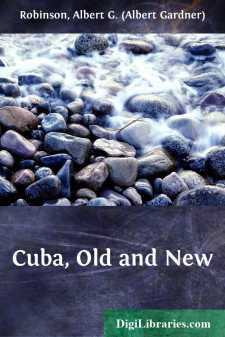Categories
- Antiques & Collectibles 13
- Architecture 36
- Art 48
- Bibles 22
- Biography & Autobiography 813
- Body, Mind & Spirit 142
- Business & Economics 28
- Children's Books 16
- Children's Fiction 13
- Computers 4
- Cooking 94
- Crafts & Hobbies 4
- Drama 346
- Education 46
- Family & Relationships 57
- Fiction 11829
- Games 19
- Gardening 17
- Health & Fitness 34
- History 1377
- House & Home 1
- Humor 147
- Juvenile Fiction 1873
- Juvenile Nonfiction 202
- Language Arts & Disciplines 88
- Law 16
- Literary Collections 686
- Literary Criticism 179
- Mathematics 13
- Medical 41
- Music 40
- Nature 179
- Non-Classifiable 1768
- Performing Arts 7
- Periodicals 1453
- Philosophy 64
- Photography 2
- Poetry 896
- Political Science 203
- Psychology 42
- Reference 154
- Religion 513
- Science 126
- Self-Help 84
- Social Science 81
- Sports & Recreation 34
- Study Aids 3
- Technology & Engineering 59
- Transportation 23
- Travel 463
- True Crime 29
Cuba, Old and New
Categories:
Description:
Excerpt
I
OLD CUBA
Christopher Columbus was a man of lively imagination. Had he been an ordinary, prosaic and plodding individual, he would have stayed at home combing wool as did his prosaic and plodding ancestors for several generations. At the age of fourteen he went to sea and soon developed an active curiosity about regions then unknown but believed to exist. There was even then some knowledge of western Asia, and even of China as approached from the west. Two and two being properly put together, the result was a reasonable argument that China and India could be reached from the other direction, that is, by going westward instead of eastward.
In the early autumn of the year 1492, Columbus was busy discovering islands in the Caribbean Sea region, and, incidentally, seeking for the richest of the group. From dwellers on other islands, he heard of one, called Cubanacan, larger and richer than any that he had then discovered. A mixture of those tales with his own vivid imagination produced a belief in a country of wide extent, vastly rich in gold and gems, and already a centre of an extensive commerce. Cruising in search of what he believed to be the eastern coast of Asia, he sighted the shore of Cuba on the morning of October 28, 1492. His journal, under date of October 24, states: "At midnight I tripped my anchors off this Cabo del Isleo de Isabella, where I was pitched to go to the island of Cuba, which I learn from these people is very large and magnificent, and there are gold and spices in it, and large ships and merchants. And so I think it must be the island of Cipango (Japan), of which they tell such wonders." The record, under date of Sunday, 28th of October, states: "Continued for the nearest land of Cuba, and entered a beautiful estuary, clear of rocks and other dangers. The mouth of the estuary had twelve fathoms depth, and it was wide enough for a ship to work into." Students have disagreed regarding the first Cuban port entered by Columbus. There is general acceptance of October 28 as the date of arrival. Some contend that on that day he entered Nipe Bay, while others, and apparently the greater number, locate the spot somewhat to the west of Nuevitas. Wherever he first landed on it, there is agreement that he called the island Juana, in honor of Prince Juan, taking possession "in the name of Christ, Our Lady, and the reigning Sovereigns of Spain."
His record of the landing place is obscure. It is known that he sailed some leagues beyond it, to the westward. While on board his caravel, on his homeward voyage, he wrote a letter to his friend, Don Rafael Sanchez, "Treasurer of their most Serene Highnesses," in which the experience is described. The original letter is lost, but it was translated into Latin and published in Barcelona in the following year, 1493. While the Latin form is variously translated into English, the general tenor of all is the same. He wrote: "When I arrived at Juana (Cuba), I sailed along the coast to the west, discovering so great an extent of land that I could not imagine it to be an island, but the continent of Cathay....


